| Highways, Byways, And Bridge Photography |
DM&IR Bridge
DM&IR Saint Louis River Railroad Crossing
Forbes, MN
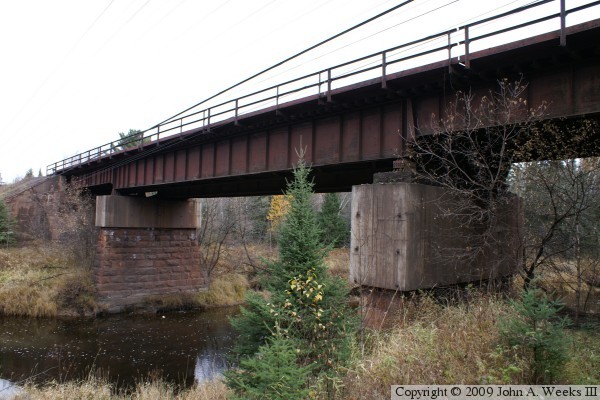
|
• Structure ID: |
N/A |
|
• Location: |
River Mile 124.5 |
|
• River Elevation: |
1,299 Feet |
|
• Railroad: |
Duluth, Missabe, & Iron Range Railway |
|
• Daily Traffic Count: |
11 Trains Per Day |
|
• Bridge Type: |
Steel Deck Plate Girder |
|
• Bridge Length: |
190 Feet (Estimated), 85 Foot Longest Span (Estimated) |
|
• Bridge Width: |
26 Feet (Estimated), 2 Tracks |
|
• Navigation Channel Width: |
Non-Navigable |
|
• Height Above Water: |
30 Feet |
|
• Date Built: |
Crossing Dates To 1892 |
The Duluth, Missabe & Northern railroad was formed in 1891, and opened a
railroad line between Virginia and Brookstone in 1892. Several branches
connected to mines in the Virginia area. The DM&N initially used the
Great Northern to carry ore from Brookstone into Superior. The DM&N soon
built its own line from Alborn into Proctor and down the hill into Duluth.
The DM&N merged with the Duluth & Iron Range Rail Road in 1937 to
form the Duluth, Missabe, & Iron Range Railway. The DMIR hauled huge
volumes of iron ore in the years leading up to and during World War II. It
survived for over 100 years as an independent railroad, which is unusual for
a major railroad that has limited track miles and primarily carries a single
cargo. The DM&IR was bought by the Canadian National in 2004. The
DM&IR locomotives now carry the CN colors, but many of the cars continue
to display their DM&IR markings.
The bridge over the Saint Louis River would have been built in 1891 and 1892
as part of the initial railroad line construction. The bridge that currently
exists uses the 1892 era piers and abutments, but the steel on the bridge is
probably newer than 1892. The girders and deck was probably replaced as
railroad equipment became heavier and cargo volumes increased in the 1930s.
The photo above shows the 1892 piers to good advantage. Notice that they
have been capped with reinforced concrete, adding weight to the speculation
that this is at least a second generation bridge.
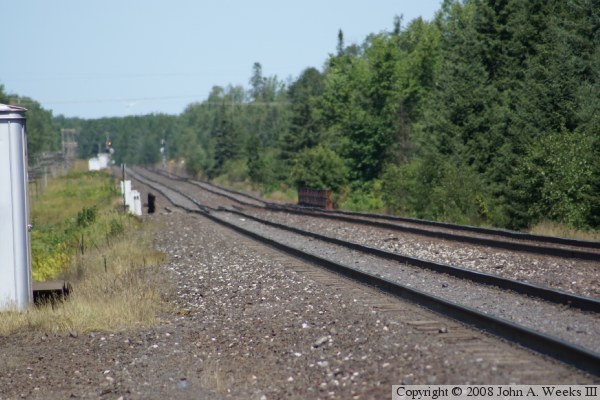
These two photos are looking north from Zupetz Drive. The bridge is located
about 1,400 feet north of Zupetz Drive. The photo above is a view looking
northeast, while the photo below is looking a bit to the northwest. The
CN runs dual track traffic in this area. Loaded trains head south on the
right hand track. Empty trains head north on the left hand track. The
right hand track happens to be in much better condition at this location.
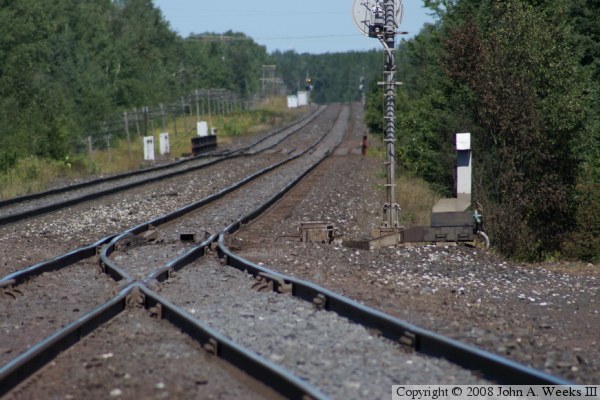
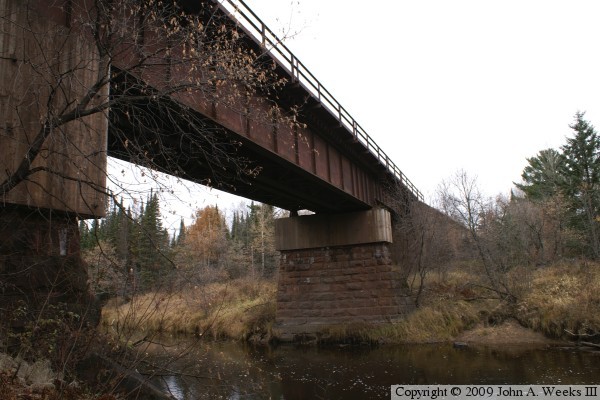
The photo above is looking north across the Saint Louis River from under the
southeast corner of the bridge. The photo below is a close view of the
pier on the north side of the river channel. Notice that the right side
of the pier appears to have a step shape and it has a sharp leading edge
on the upriver side of the pier. This is an ice deflector used to break
up any ice that might jam up against the bridge pier.
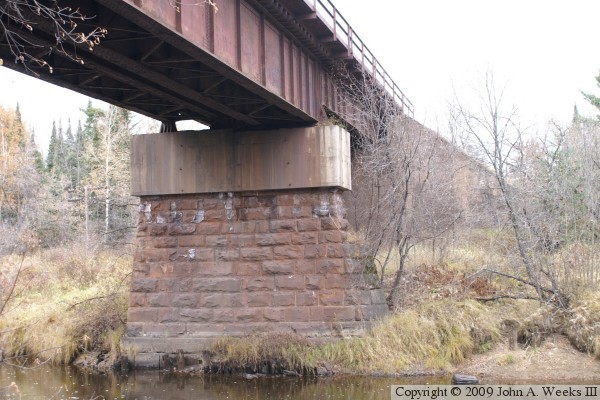
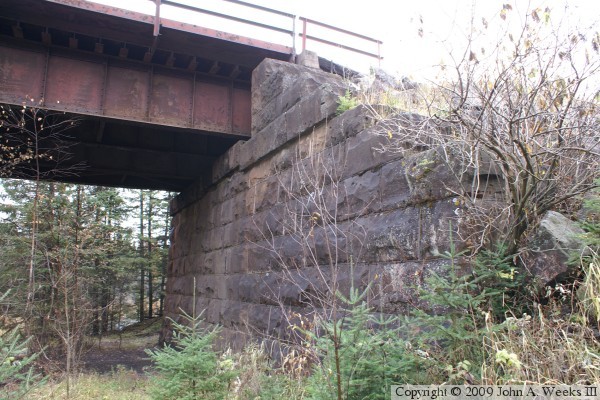
The photo above is the south bridge abutment as seen from the southwest
corner of the bridge structure. The photo below is a close view of a
bridge bearing. A bearing allows the bridge to slide lengthwise on the
pier as the bridge expands and contracts with temperature changes.

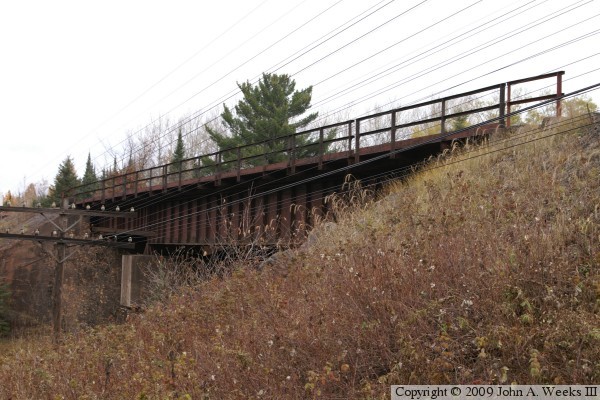
The photo above is a view of the downstream side of the bridge looking to the
northeast from the side of the railroad embankment. The photo below is a view
from the southwest corner of the bridge structure.
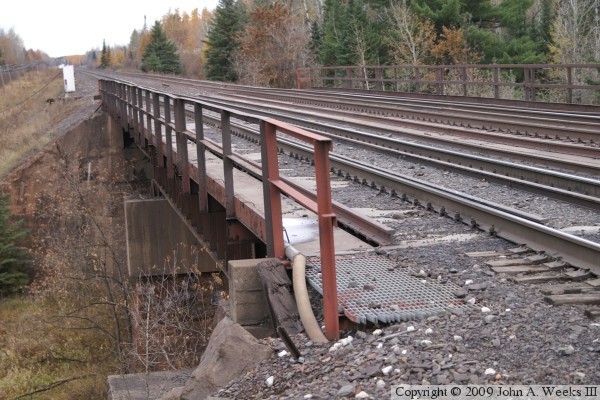

The photo above is looking north down the length of the bridge deck from the
center of the railroad roadbed. The photo below is a similar view from the
southwest corner of the bridge. The bridge deck looks very similar to the top
of the former DMIR twin track bridge at Elmer on the Albron-Pengilly Railroad
ATV Trail located a few miles downstream.
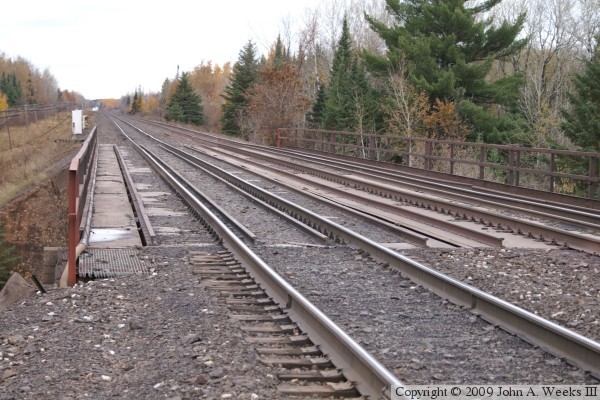
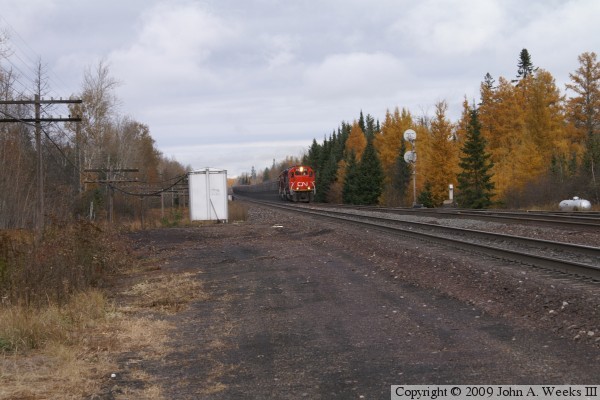
A loaded train crossed the Saint Louis River bridge when I visited this
site in the fall of 2009. In the photo above, the center of the train is
crossing the river bridge. In the photo below, the locomotives are nearing
the grade crossing at Zupetz Drive.
The lead locomotive is an EMD SD38-2. It was delivered to the Duluth, Missabe,
& Iron Rain Railway on March 30, 1975. It wore the purple DMIR paint job
until it was repainted in the CN paint scheme in December of 2008. The SD38-2
develops 2,000 horsepower and all six axles are powered. The second locomotive
is the former Illinois Central number 6261. This 3,000 horsepower unit began
life as an EMD SD40-2, but was upgraded with an electronic load controller.
The CN has designated this upgrade package as the SD40-3.
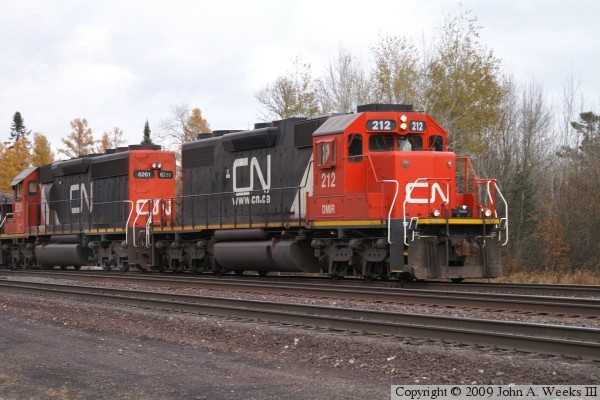
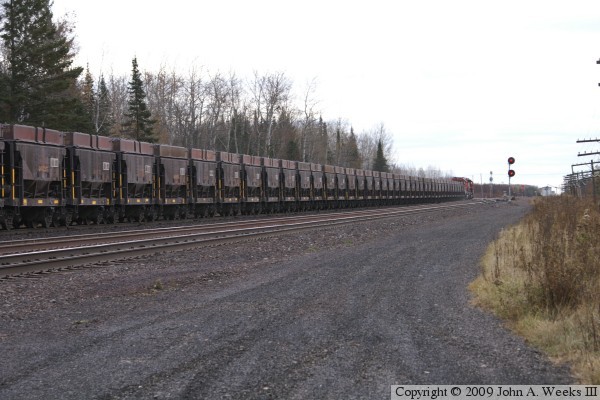
The photo above is looking south as the locomotives cross the grade crossing
at Zupetz Drive. The photo below is a view of the ore cars as the train passes.
DMIR was famous for running mini-quad cars, which were groups of 4 ore cars
that were permanently connected by drawbars. In this train, however, each
car has a set of couplers.
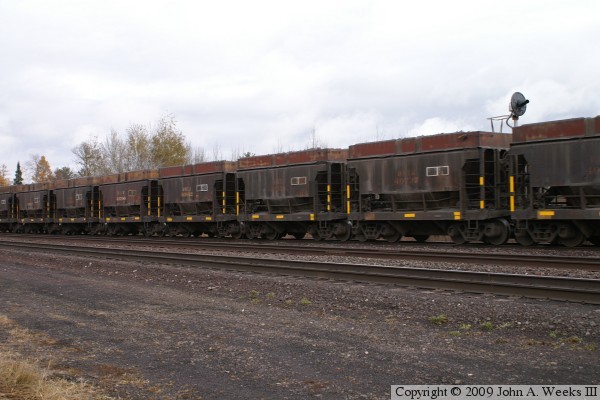
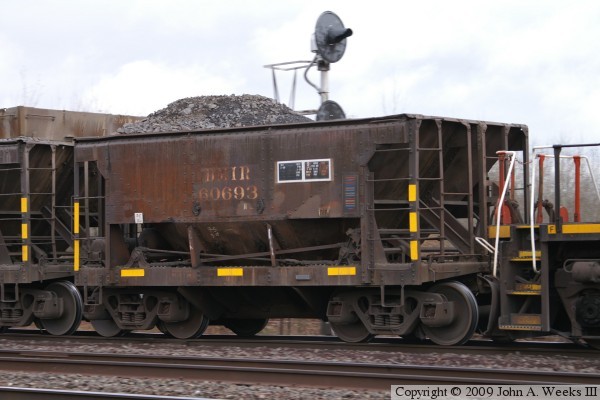
The photo above is a close view of the first ore car following the locomotives.
The photo below is the final car in the train. There is no caboose on this
train, so the tail end car has an EOTD, end of train device. An EOTD
monitors the air brake pressure and signals the train crew in the event of
a brake problem or if the train becomes disconnected. It is interesting
that the ore cars all have sideboards except for the first and last cars
in the train. Note that this train is not carrying iron ore or taconite.
Rather, it is carrying flux stone, which is limestone that is used in the
process of making steel. In this case, the flux stone is being carried to
the Evtac mine. By incorporating the flux stone into the taconite pellets,
there is no need to ship the flux stone to the steel mills on the Great Lakes.
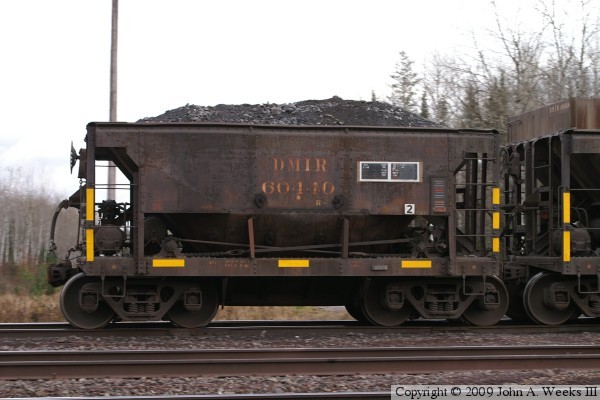
|

















